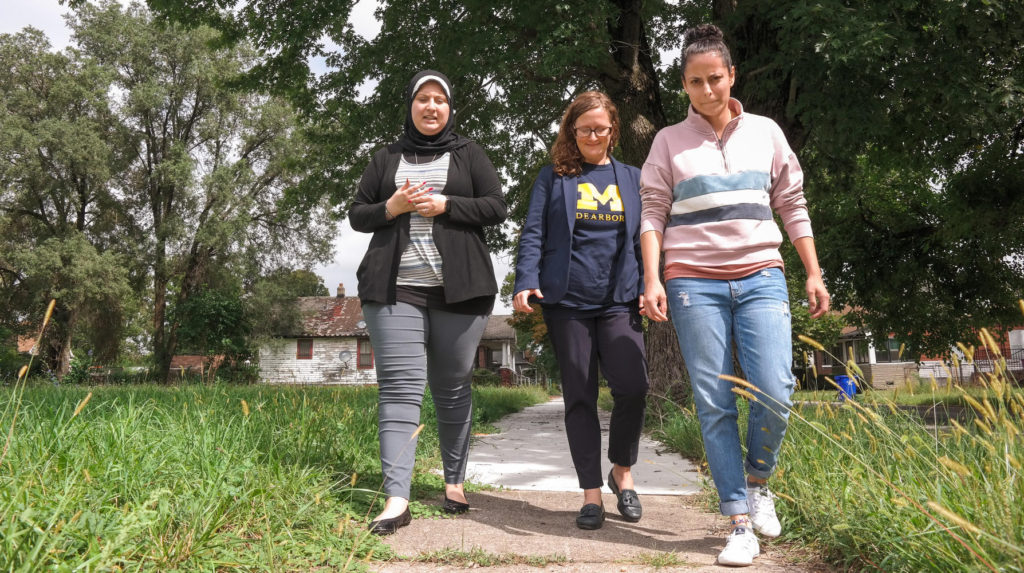
In Detroit’s Delray neighborhood, Assistant Professor of Public Health Natalie Sampson (center) walks with senior Valeria Cossyleon (right) and Janine Hussein (‘18), two UM-Dearborn students who helped collect door-to-door health surveys in Southwest Detroit.

In Detroit’s Delray neighborhood, Assistant Professor of Public Health Natalie Sampson (center) walks with senior Valeria Cossyleon (right) and Janine Hussein (‘18), two UM-Dearborn students who helped collect door-to-door health surveys in Southwest Detroit.
UM-Dearborn Assistant Professor Natalie Sampson’s research into public health issues in Detroit’s Delray neighborhood has spanned a decade — and has begun to play a role in shaping public policy. But when talking about the years of work, she definitely prefers shining the spotlight on the community and her partners. Among the collaborators she’s quick to acknowledge are Southwest Detroit’s determined organizers and her public health colleagues in Ann Arbor. She also speaks with particular affection about her students, who’ve done the intense, intimate door-to-door work of collecting health testimonies from individuals who shoulder an outsized share of environmental burdens.
For decades, life in Delray has been set against a heavily industrialized landscape that features, among other things, Zug Island’s steel and coke operations, an oil refinery, Detroit’s major sewage treatment plant and the I-75 freeway. Not surprisingly, residents disproportionately report dealing with a number of health issues, especially respiratory problems, which Sampson and her partners’ work has helped shine a light on in recent years. Even so, industrial development in Delray appears to still be in a growth phase. Most notably, the neighborhood was chosen a few years ago as the site of the new Gordie Howe International Bridge — a massive infrastructure project that could double truck traffic between the U.S. and Canada when it opens in 2024.
Read more here.

